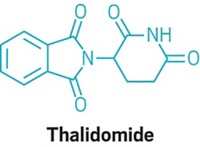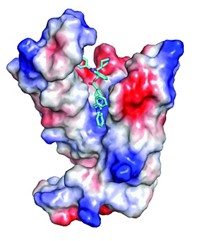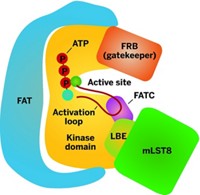Advertisement
Grab your lab coat. Let's get started
Welcome!
Welcome!
Create an account below to get 6 C&EN articles per month, receive newsletters and more - all free.
It seems this is your first time logging in online. Please enter the following information to continue.
As an ACS member you automatically get access to this site. All we need is few more details to create your reading experience.
Not you? Sign in with a different account.
Not you? Sign in with a different account.
ERROR 1
ERROR 1
ERROR 2
ERROR 2
ERROR 2
ERROR 2
ERROR 2
Password and Confirm password must match.
If you have an ACS member number, please enter it here so we can link this account to your membership. (optional)
ERROR 2
ACS values your privacy. By submitting your information, you are gaining access to C&EN and subscribing to our weekly newsletter. We use the information you provide to make your reading experience better, and we will never sell your data to third party members.
Pharmaceuticals
Getting A Clue About Cortistatin's Activity
Crucial isoquinoline ring in natural product’s structure leads researchers to a set of potential kinase targets for cancer and vision therapies
by Carmen Drahl
November 2, 2009
| A version of this story appeared in
Volume 87, Issue 44
The natural product cortistatin A is a sought-after target for synthetic chemists because it selectively blocks cellular activities known to be necessary for blood vessel growth. That bioactivity could lead to new therapies for cancers and vision impairments where vessel growth is out of whack. However, the biological targets for cortistatin A and its cortistatin “siblings” have remained elusive. Guided by the knowledge that cortistatin’s isoquinoline ring—which is critical for its activity—is a hallmark of kinase inhibitors, Victor J. Cee and Matthew R. Lee of Amgen; David Y.-K. Chen of Singapore’s Agency for Science, Technology & Research; and K. C. Nicolaou of Scripps Research Institute examined cortistatin A’s affinity for a large panel of kinases (Angew. Chem. Int. Ed., DOI: 10.1002/anie.200904778). They learned that cortistatin A binds tightly to a trio of kinases with a variety of biological roles. Molecular modeling experiments suggest that the isoquinoline ring makes key interactions with the kinases’ ATP binding pockets. However, the team cautions that further work is necessary to link the kinase-binding activity to cortistatin’s potent bioactivity.





Join the conversation
Contact the reporter
Submit a Letter to the Editor for publication
Engage with us on Twitter